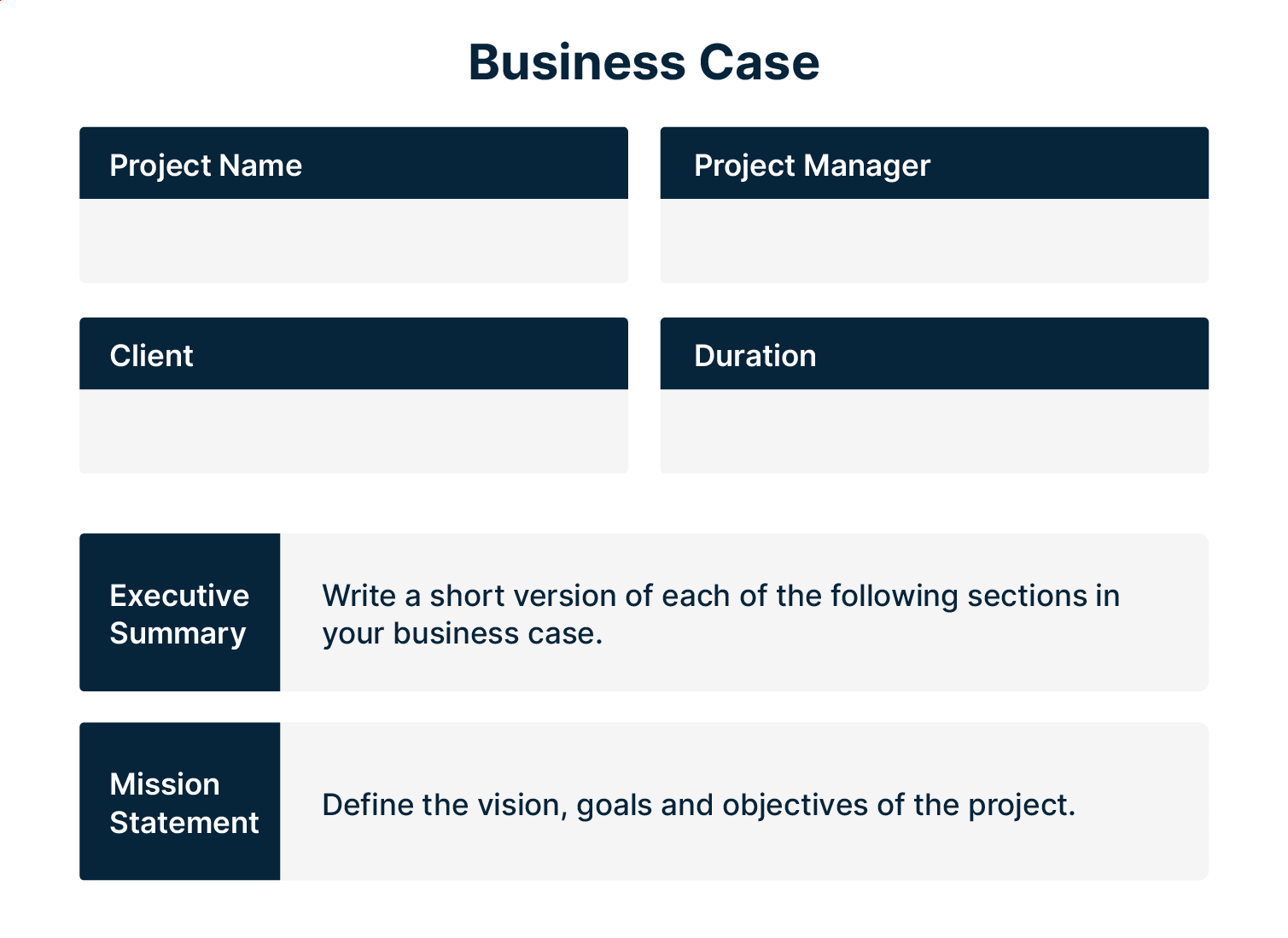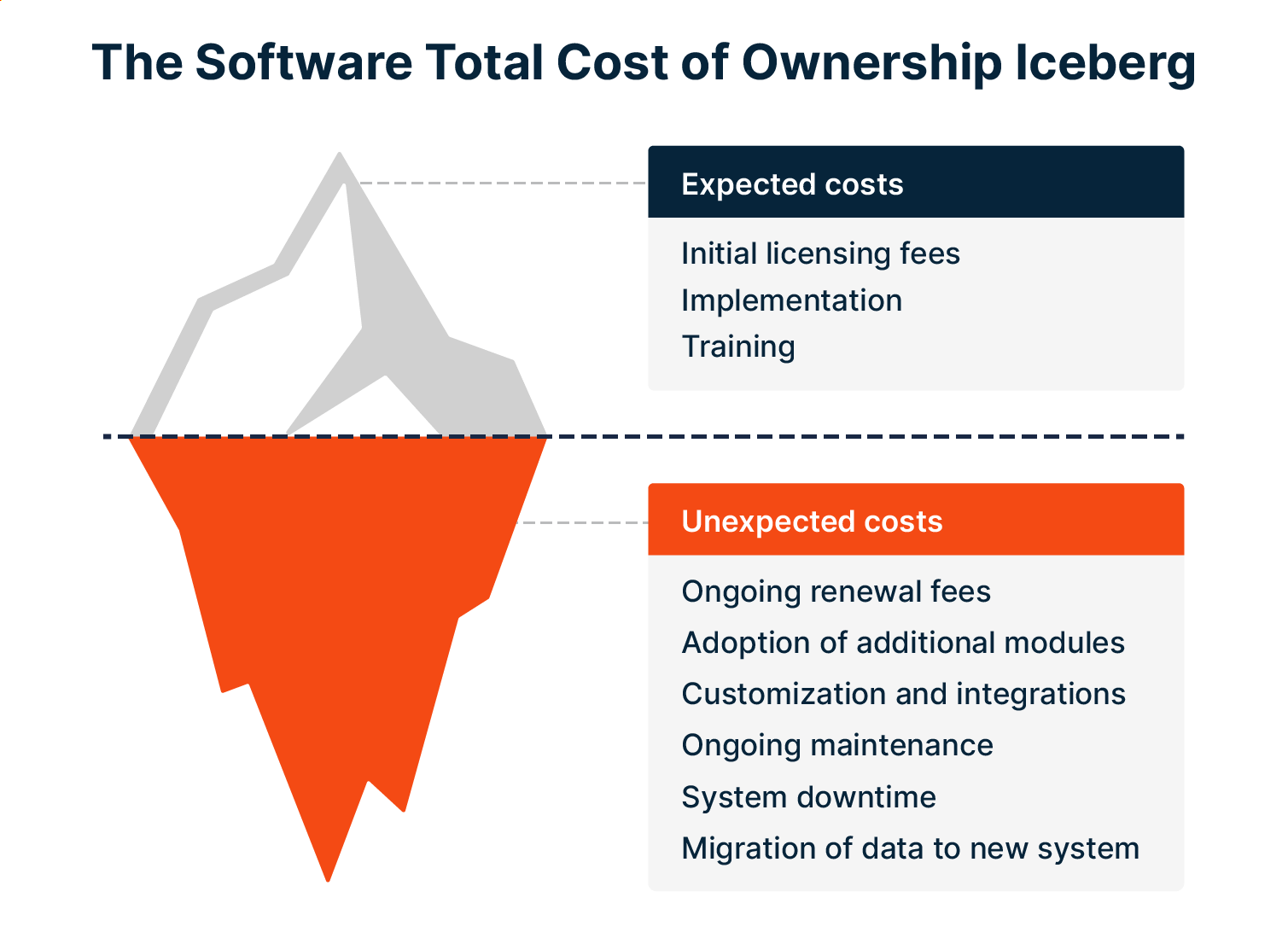New software can transform a business in many ways. However, getting executives on board with adopting the new software can be challenging without the proper support. Next time you have software for your B2B tech company, create a well-planned business case to vastly improve your approval odds.
Learn how to build a business case for software that engages and convinces your business executives.
Key Takeaways:
- A business case outlines the benefits of adopting a new software
- Begin the business case with a challenge, then offer the software as the best solution
- Take time to outline the costs associated with adopting the new software
What Should a Business Case for Software Accomplish?
A software business case is a formal outline of new software and the software's benefits. B2B tech team managers submit the case to executives for approval before the team manager adopts the software in their department.
A thorough business case includes several elements:
- Summary of the software
- List of benefits and obstacles
- Outline of costs
- Timeline for implementation
In addition to convincing executives, the business case will also serve as a guide for adopting the new software and training employees to use it. As a business adopts the latest software, the document keeps teams focused on solving specific solutions and meeting deadlines. This focus ensures that the B2B tech company sees the software's benefits and that the cost of the software is worth the investment.
8 Components of a Business Case for Software
Every business case for software needs these eight parts to provide a comprehensive view of the new software and how it will help a business meet more goals.
1. Executive Summary
The top of a business case names the software and the individuals involved. The heading also has important dates, like when the project manager submitted the case. The names at the top give decision makers a contact person and an idea of what to expect.
Immediately below the heading is the executive summary. An executive summary highlights the main points of the document and the goals the team lead wants to accomplish through the software.
Some questions the executive summary should answer are:
- What problem does the software solve?
- Why does this problem need to be solved now?
- What's influencing this need?
- In what ways will the software save the business money or increase revenue?
This place in the business case is ideal for adding a mission statement, as the following business case template shows. A mission statement explains the new software's purpose.

2. Introduce a Challenge
The business case for software opens with a problem. If there isn't a problem that needs to be solved, then there's no need for the software, no matter how great the software is.
This beginning section dives into a business challenge and how the challenge is negatively impacting the business's growth. For example, a business challenge might be disconnects between teams, low-quality leads, or poor customer service.
If the project manager wants to make an impression on the executives in charge of decision making, the challenge has to impact those executives directly. For example, low-quality leads might not seem like a significant issue to executives. However, lost revenue from those leads directly impacts the business leaders.
Research into current B2B tech business objectives will help the project manager align the business case more closely with those objectives to ensure the case is relevant to the business.
3. Solution Description
Once the project manager fully describes the business's challenges, the manager can dive into how the proposed software will solve those challenges.
The executive summary already gave a brief overview of the solution. However, the solutions section digs deeper into what the solution looks like and how it directly relates to business challenges. The solution should show results that a B2B tech business can't accomplish with current software rather than spending time listing benefits that current software already provides.
For example, if a challenge is low conversion rates, the business case could outline how automatic lead distribution software improves conversion rates. The solution would look at how leads might come in from webinar lead generation. Then, those leads don't convert because there's no convenient way for marketers to connect with those prospects using current manual systems. However, automatic lead distribution software will move new leads faster to the correct departments based on pre-set criteria.
In this section, the business case can also address competitors. There's no doubt that executives will wonder whether the proposed software is the most cost-efficient and -effective solution. The business case can compare similar products to show why the proposed software is the best option to address this concern. Product differentiation outlines what the software has that other competing software doesn't offer.
4. Risk Analysis and Obstacles
No matter how many benefits a software has, there are also sure to be some risks or downsides to the software. The business case should address these challenges head-on, along with a solution for these challenges to avoid unpleasant surprises.
For example, if there are requirements or additional equipment the team needs to adopt along with the new software, now is the time to address those needs while focusing on how those investments will ultimately benefit the entire company.
Complete risk analysis shows that the project manager thoroughly researched the software and planned for every scenario. Alongside potential risks, the business case can offer solutions to avoid those risks and overcome any obstacles.
5. Cost Overview
The cost overview is one of the essential parts of the business case, as most B2B tech executives will be interested in knowing the new software costs and how it will impact company revenue.
In the cost overview, outline:
- Total implementation costs: Costs associated with the software purchase and implementation
- The total cost of ownership: Total costs of upkeeping and running the software
- Return on investment: How the software improves profits

6. Summary of Benefits and Opportunities
The benefits and opportunities section is a chance to drive home just how beneficial the new software will be. The business case already addressed benefits in the solutions section directly tied to company challenges. Now is the time to explore more benefits besides the primary solution.
For example, the benefits might be tangible, like saving time and money. These benefits are easily tracked and measured. However, some benefits are intangible, like company alignment and productivity.
Businesses today that adopt new digital technology reach financial, diversity, and environmental goals 22% faster. For example, 69% of companies use digital technology to reduce carbon emissions. Those are examples of a few benefits a business case might present to executives.
7. Adoption Timeline
The business case wraps up by providing a timeline for introducing the new software. This timeline outlines where the project team is in the decision-making process. Are the team members still looking at different vendors, or do the team members have specific software in mind?
The timeline then explains how the team plans to adopt the software, train employees, and prepare all the systems for use.
A vital part of the timeline is milestones for measuring the project's progress. How will the business know it has successfully implemented the software? What metrics will the company use to measure the return from the new software to guarantee the software delivers the promised results?
8. Project Governance
The business case ends with a list of those involved with the adoption and implementation of the software. The list names specific people within the business and those employees' titles. This outline ensures those involved know their role in the project so the software adoption runs smoothly.
Build a Better Business Case for Software
After management approves the software project, marketers are ready to start the next step so the business can see a return on the investment. ActualTech Media can help marketers connect with qualified leads so they have a successful software launch.
Contact us to learn more about our lead generation solutions.